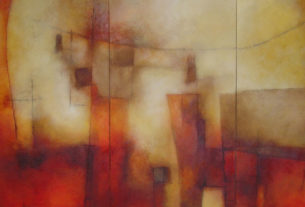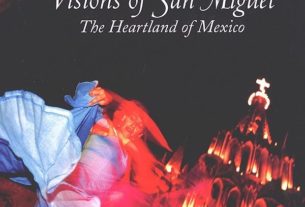Mexican History
Throughout history twins have exerted a strange fascination over people’s minds and imaginations. On the average one set of twins is born out of 80 pregnancies in different proportions, according to various hereditary factors. For example, certain women, in particular black women, have a strong tendency toward the birth of twins. Identical twins with the same generic makeup are of the same sex, although they may differ in size. Fraternal twins may be of opposite sex. Many other factors also determine the birth of twins.
The mystique associated with twins is reflected in world mythology. The ancient Greeks believed that the twins Castor and Pollux, known together as Dioscuri (“Sons of Zeus”), shared immortality between them. According to the story, Castor was killed in a battle and Pollux, inconsolable, asked Zeus to take his own life as ransom for his brother. Zeus granted his petition and, in one version, allowed the brothers to pass alternated days under the earth and in heavenly abodes.
The Dioscuri, who were friendly to human beings, arrived in times of crisis for those who had sufficient faith. They aided sailors at sea, where they appeared as St. Elmo’s fire, electrical discharge observable under certain conditions. Associated with athletic contests they were also superb horsemen.
In ancient India, the Brahmans, priests in charge of the sacred Vedas, preserved many hymns in an archaic form of the Sanskrit language. Among these are numerous invocations to two Vedic deities, the Ashvins (“horsemen”), twin sons of sun or sky. As personifications of the early dawn, they are young, golden, swift, harbingers of light in the morning sky. As twins they are inseparable. They arrive together in a horse-drawn chariot in which they cross heaven and earth in a single day. The Ashvins also chase away the darkness, drive out evil spirits, and perform rescue missions for people in distress. Since they appear between dawn and sunrise it is likely that they represent the transitional period between darkness & light.
Like the Greek Dioscuri, the Ashvins present two aspects: the cosmic and the human or historic. Their luminous nature symbolizes the effects of light and the early arts of healing. Historically, it is feasible that the myth originated with famous horsemen or warriors of renown who also possessed medical skills and eventually became associated with the gods.
In ancient Mexico, twins in general were considered dangerous. The Aztec deity Xolotl, noted for his deformity, was the patron of twins. The Aztecs regarded twins as such a bad omen that they believed one should be killed at birth. But again Divine Twins also represent dual nature. In the Borgia Codex, a pre-Hispanic Mixtec-Aztec hieroglyphic text, Quetzalcoatl, the Toltec culture here, and Tezcatlipoca, his evil counterpart, travel together as twins through the underworld.
The Quiche Maya of Guatemala took a much different view of twins. In the Popol Vuh, a semi-heroic type of epic written in the Quiche language of the 16th century and based on an earlier iheroglyphic text, the Divine Hero Twins, Hunahpu and Xbalanque, undertake a typical mythological Hero Journey. In this particular Maya vision of the cosmos no less than three sets of twins are involved.
In keeping with ancient Maya concept of cyclical time, the story presents a complete cycle of events, but not in chronological order. The cosmological account is in three parts. We begin in the middle with the victory of the Hero Twins, who are also demigods, over Seven Macaw, who represents the false sun. Then a flashback takes us back to One Hunahpu and his brother Seven Hunahpu, the father and uncle of the hero twins, who had already lost their battle against the Lords Xibalba, the Underworld. By a miracle the head of One Hunahpu survived and gave birth to the Hero Twins who continued the battle against the powers of darkness. After surviving many trials in the underworld, the Hero Twins, Hunahpu and Xbalanque, finally proved their superiority by sacrificing themselves and coming back to life again. The Lords of the Underworld were so impressed they asked to be sacrificed in turn, but this time, the Hero Twins did not bring them back to life, thus defeating the Lords of Death. A third set of twins, the black sheep of the story, were turned into monkeys.
The Hero Twins of the Popol Vuh, like the Greek Dioscuri and the Vedic Ashvins, represent the transition from darkness to light and the reconciliation of opposing forces or elements, such as light vs darkness, youth vs age, and life vs death. Thus, after defeating death, the Hero Twins rise up from the darkness into light to become the sun and the moon. Christianity begins with the birth of Christ and ends with the sacrifice and death of Christ on the Cross followed by his Resurrection. In ancient Mesoamerican religious thought life proceeds out of death but the basic concept is the same. The apotheosis of the Divine Twins begins with the triumph of Death but ends with their passage from death to life, thus uniting opposing elements into one cyclic whole.
Mythology, if properly interpreted, reveals many truths about the human condition. The bond that is often seen to exist between one twin and another suggests the natural uniting of opposites into one harmonious whole. That is not to say that even identical twins may not violently disagree with one another but the special quality of twins has given rise to a world-wide mythology involving Divine Twins.
This article appears courtesy of the Chapala Review, a monthly Newspaper published in Ajijic, Jalisco, Mexico. The focus is the Lake Chapala area. The goal is to provide quality information about the area, its stories, events, history, culture and people.


